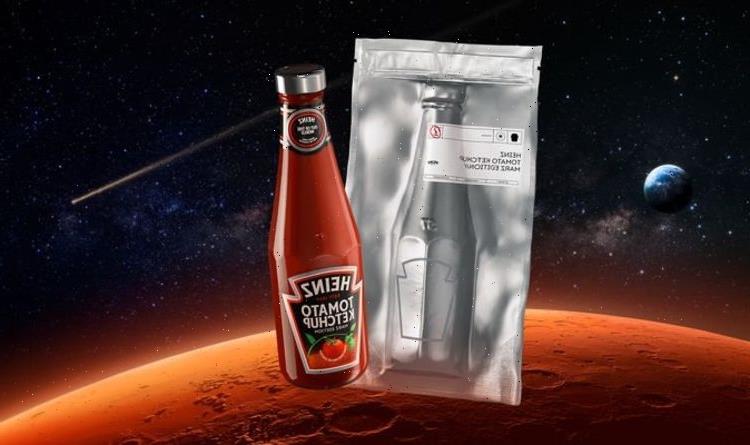Mars: Expert reveals best way to spot the red planet
We use your sign-up to provide content in ways you’ve consented to and to improve our understanding of you. This may include adverts from us and 3rd parties based on our understanding. You can unsubscribe at any time. More info
The special sauce was two years in the making as a team of astrobiologists from the Florida Institute of Technology’s Aldrin Space Institute had to figure out how to replicate the Red Planet’s conditions. Their 14-member team, led by Dr Andrew Palmer, has submitted the first of three papers for scientific publication detailing the project.
Along with their students, they spent over 2,000 hours over nine months, working with the Heinz experts over the course of two years to perfect the crop.
A bespoke greenhouse, dubbed the Redhouse, was built to replicate conditions on Mars, where they used artificial LED lighting and 3500kg of the analogue Martian regolith (Martian soil).
The team started testing the seeds in the conditions of Martian regolith and once this was perfected, the experiment became one of the largest growing projects related to Mars ever conducted.


The researchers also had to create a unique biodome to be able to mimic these conditions that humans would experience on the Red Planet.
The project succeeded in growing tomatoes to have the same quality as tomatoes usually used in the making of Heinz Tomato Ketchup.
Cristina Kenz, chief growth officer for Kraft Heinz International Zone, said: “There are many important factors our tomato masters consider when it comes to the right properties when growing Heinz tomatoes in new and less than ideal soil environments – from thickness to colour and sweetness, these all ensure we can create the unmistakable Heinz Tomato Ketchup we all know and love.
“Taking care of our soils is one of our key missions, and we’ll take the learnings into continuing our commitments towards growing sustainable crops.”

“We’re so excited that our team of experts have been able to grow tomatoes in conditions found on another planet and share our creation with the world.
“From analysing the soil from Martian conditions two years ago to harvesting now, it’s been a journey that’s proved wherever we end up, Heinz Tomato Ketchup will still be enjoyed for generations to come.”
The extra-terrestrial condiment was unveiled this week, when a limited-edition bottle was sent on a spaceflight beyond the Earth’s atmosphere, reaching 37,000 metres into the sky and -70C temperatures before returning to Earth.
The bottle is now back at Heinz HQ and has undergone quality testing to get the green light to become an official new edition of Heinz Tomato Ketchup.
DON’T MISS
La Palma landslide ‘could kill millions of people’ [REPORT]
Egypt breakthrough after ‘find of a lifetime’ uncovered [REVEAL]
Frost to scrap EU projects and create alternative [INSIGHT]


British Space Scientist and Science Communicator, Dr Maggie Aderin-Pocock, said: “I find it so exciting that a longstanding, well-established company like Heinz is, as always, future-gazing, and has “Marz in its eyes”.
“This project is critical in tackling both our short-term and long-term goals in feeding people for generations to come.”
Dr Aderin-Pocock said this could prove revolutionary in providing more food security down on Earth.
She said: “If we can grow crops on the Martian regolith then the prognosis for growing crops here on Earth, in some of the more inhospitable areas of our planet, is greatly improved. And as we reach further and further out into space it is heartening to know that mass crop production is possible on Mars and likely beyond.”
Source: Read Full Article
